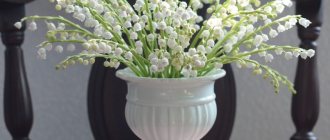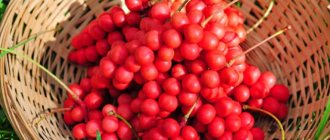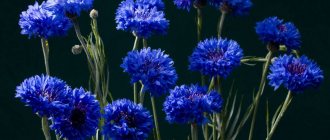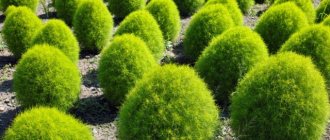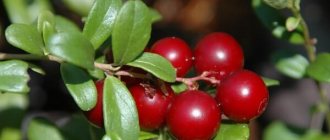A description of medicinal lemon balm and its photo will help you get to know this magnificent culture better. Useful properties are used in various spheres of human life. But it will be useful for lovers of aromatic teas made from fresh herbs of their own production to learn how to grow medicinal lemon balm on a windowsill in a pot.
Description of the Melissa herb plant
Melissa officinalis or medicinal lemon balm is a perennial representative of herbaceous crops that belong to the Lamiaceae family. This culture has been used in folk medicine for more than 2000 years, providing maximum beneficial properties. Sometimes in some sources this plant is mentioned under other names - lemon balm. But this name is not appropriate, since Mint is a different type of crop.
What does Melissa grass look like?
Melissa herb is a perennial plant that contains an essential oil extract with a pleasant lemon aroma. It is thanks to this property that the crop is often called “lemon” or “bee leaf”. Melissa is often called the “heart herb” because of its beneficial medicinal properties. The natural habitat of the plant is Mediterranean countries, the Black Sea coast, and northern Africa. The grass is also widespread throughout Europe, Iran, Asia and northern America.
The height of the Melissa plant is from 30 centimeters to 1.5 meters. It has a straight, branched stem, usually tetrahedral. Leaves with a petiole - a stalk where they are attached. They have an oval shape with small notches along the edges. The surface of the grass is covered with small hairs. The bushes bloom with tiny buds, they are painted in a pale or light lilac color, and white flowers are also found. They are located in the axils of the upper leaves of crops.
Photo of blooming lemon balm
You can observe the flowering of grass from the 2nd year of life; usually this period falls on the 2nd half of the summer season. The fruit has an incredibly interesting shape, it consists of 4 nuts of an oval configuration, the color is light coffee.
Melissa is often confused with Peppermint or Catnip due to their similarity. To understand the difference between the Melissa plant and Peppermint, you need to visually look at the bushes. Mint has a straight stem, while Melissa has a branched stem. The aroma of the first plant is menthol, and lemon balm is reminiscent of lemon. In the first case, the inflorescences are spike-shaped, in the second - in the form of false rings. Also, Mint has a large amount of essential extract, while Melissa has a moderate amount.
How to prepare seeds for planting
Mint and lemon balm are related plants belonging to the same family, but they differ from each other in smell and leaf shape. Due to the fact that lemon balm is often called lemon balm, confusion occurs. Growing lemon balm is a simple process; you just have to keep in mind that the tiny seeds have poor germination. You can plant them in open ground in April to a depth of 1.5 cm, but lemon balm will bloom only next year.
More often the plant is planted as seedlings; it is enough to plant the seeds (half a centimeter deep is enough) in small peat pots or a box.
Thin out the seedlings - the distance should be at least 5 cm. Seedlings need a lot of sun, so it is advisable to place the pots or box on the south window, and in warm and sunny weather they can be taken out to the balcony. To help lemon balm grow better, apply a small amount of nitrogen fertilizer.
Growing and caring for the Melissa plant
Medicinal lemon balm is quite easy to grow at home. To get beautiful bushes at home, you need to purchase or collect high-quality seed material. Also a prerequisite is the treatment of containers with a solution of potassium permanganate. In spring, moist soil is prepared where the seeds will be sown. They need to be buried only 0.5 centimeters, making a distance of 5-6 centimeters between future plants.
Before the first sprouts appear, it is necessary to water the crops every 2 days, observing the optimal temperature regime of +10...12 degrees. After 12-20 days, the first shoots will begin to form. In May, the sprouts will grow and can be planted in separate flower boxes, keeping a distance of 15 centimeters. When true leaves form, the crops will need to be thinned. For effective growing, it is better to place the bushes in pots on the sunny side so that they are filled with aroma.
Note! If you want to get beautiful bushes of Melissa Lemon grass, it is better not to sow them directly in the garden, but to start growing them in an apartment or in a house. Outdoors, crops can grow with minor defects in the form of overly elongated stems and miniature leaves.
Correct fit
Seedlings are planted in open ground after 1–1.5 months. after germination. Wait until spring frosts have passed - seedlings do not tolerate cold well. Plant lemon balm 30cm apart, with rows twice as wide apart. Caring for the plant is not difficult - just periodically loosen the soil and weed out the weeds. The bushes will require watering during dry and hot periods.
Melissa needs to be fed periodically.
The shoots are pruned 2-3 times during the summer, this is necessary so that the bush actively branches. Lemon balm tolerates snowy winters well, but bushes older than 5 years are less resistant to cold, they need to be divided and planted in time.
Basic rules for caring for Melissa
The medicinal plant Melissa requires compliance with only a few basic rules of care. Let's look at them in more detail.
Priming
This grass feels great on any soil. But for sowing, it is recommended to take a light substrate, and for planting in the garden, it is better to use garden soil or a mixture based on turf soil, sand and a small amount of humus. Unique formulations that are used for indoor crops are also suitable.
Lighting level
It is better to avoid direct ultraviolet rays from hitting the bushes; it is preferable to have diffused light on the plants. Exposure to through winds is also not recommended. In winter (if the bush is grown all year round in pots) additional lighting will be needed. For this, fluorescent lamps are used, their power is up to 80 W. These lamps are turned on for 6 hours.
Temperature
If the plant is grown indoors, the temperature should not be below +10 degrees. But for comfortable growth, conditions are created at +25 degrees.
Watering
The quality of crop growth depends on how much moisture gets into the soil. Irrigation is performed 3 times a week, but waterlogging can cause unpleasant consequences in the form of the development of various diseases. Lemon bushes also love spraying, but there is no need to overdo it either.
Fertilizer
To feed this plant, organic substances are used, for example, tea leaves or eggshells. Mineral compositions of liquid consistency (superphosphate, ammonium sulfate or potassium salt) are also suitable. It is recommended to fertilize after each leaf cutting.
You might be interested
Secrets of how to water a garden: choosing the optimal method and irrigation period
Choosing effective systemic insecticides for the garden
Getting rid of aphids in the garden using effective methods
Diseases
Ornamental plants for the home, descriptions of popular species + 25 photo examples
Most often, the owner is faced with two troubles when growing lemon balm: rust (characterized by the appearance of dark brown bulges on the back of the leaves) and septoria (numerous light spots with a brown border appear on the leaf blades along the edges). Rust is caused by excess nitrogen in the soil and high humidity, while septoria is caused by the Septoria fungus.
In the first case, the treatment is simple: the affected leaves are cut off from the plant and treated with any fungicide. But septoria is much more dangerous: since the fungi that cause this disease are very tenacious, re-infection often occurs through the soil. In this case, all that remains is to burn the plant, throw away the soil and disinfect the pot. The garden plot should be treated with fungicide several times.
Why do plant leaves darken, turn black, or turn yellow? If the lemon balm leaves begin to turn black, the owner is watering it too generously. The amount of water should be reduced by half and loosen the soil more often.
But yellowing tips indicate a lack of water and too dry soil. The owner should urgently increase the portion of liquid.
The appearance of spots on the leaves may indicate either the onset of verticillium wilt or anthracnose. Both diseases are caused by pathogenic fungi, but only in the second case can the plant be saved by spraying it 3-4 times with Bordeaux mixture.
Melissa propagation methods
The seed method of growing a plant was discussed above, but cuttings and division of rhizomes are also used to propagate crops. Let us dwell in more detail on the last two methods.
Propagating the crop by dividing the bush is a fairly simple way to obtain bee grass. At the end of summer, the bushes will begin to produce shoots, which are carefully divided into the required number of parts, and then the divisions are planted in a permanent location. This method allows you to get the fastest results.
Reproduction by layering is also practiced. To do this you will need a large and mature bush. In summer, the shoots must be bent to the soil, secured with brackets and sprinkled with a little soil. The place where the greenery was buried is watered. After some time, roots will begin to form. The new bush will need to be separated from the parent plant and transplanted to the desired location.
Cuttings are carried out as follows: fresh stems of Melissa are cut off, the tops are removed, and placed in a glass of water. After 10 days, roots form on the stems. After this, the cuttings must be transplanted into containers where they will grow. The formation of new young shoots can be observed after 21 days.
Popular types and varieties: name, description and photo
Medicinal - lemon
Indoor and garden spurge (60+ photos of species with names): planting and caring for the plant
A perennial plant, it is a branched bush, 45 cm wide and 125 cm high. The flowers are small, white, pink or yellow. The tops of shoots and leaves contain the highest concentration of essential oils. The heart-shaped leaves can be collected the next year after planting the plant in a permanent place.
Tsaritsynskaya semko
A perennial plant, 80 cm high, blooms in mid-July. Melissa can grow in one place for up to ten years. Before and after this period, you need to cut the leaves twice, which have a pointed shape and a dark green tint. The side shoots of the plant are creeping.
Quadrille
Pointed green leaves with denticles along the edges densely cover a bush 80 cm high. Cutting is carried out the next year after planting, before or after flowering. The plant has a very pronounced lemon smell, and the leaves have a bitter taste.
Dozya
A perennial that can grow in the same place for up to five years. The height of the bush reaches 90 cm. In the second year of cultivation, the active growing season is one and a half months. The leaves are dark green in color, slightly raised, with shallow grooves and teeth along the edges. The flowers are white, small. It has a pronounced, not sharp lemon aroma.
Lada
A plant with a semi-erect stem and medium-length, wide leaf blades. The variety is short - approximately 52-54 cm, blooms with small white flowers.
Isidora
The height of the plant is about 80 cm. The leaves are green with a light green tint and have an oval shape and serrated edges. The peculiarity of the variety is its rapid growth. The leaves are suitable for consumption in the second year after planting.
Pearl
A shrub 70 cm high with oval leaves edged with teeth. A perennial that grows productively in one place for up to five years. The greens are suitable for consumption in the second year of planting. At least two cuts must be made per season.
The variety is high-yielding - about 5 kg of raw materials can be collected per square meter. The plant has a bright mint aroma with a lemon note and a tart taste with a slight bitterness.
Golden
It differs from other varieties in the non-standard color of the foliage - it is dark green with a golden pattern. The leaves are small and toothed. The plant is perennial and needs to be replanted to a new location every five years.
Pure gold
The variety is artificially bred. Compact shrub with oval leaves of a golden hue. The length and width of the plant are the same - about half a meter. The flowers are initially white and become pale lilac by mid-flowering.
Melissa is often confused with mint, catnip and Moldavian snakehead. Melissa has a similar smell to catnip, and the aroma of snakehead can be distinguished from lemon balm only by its intensity. The annual “Turkish lemon balm”, also called snakehead, has a sharper and richer citrus smell.
Melissa herb: medicinal properties and contraindications
Melissa herb contains a large number of beneficial microelements. Among them are a lot of carotene, vitamin C, myrcein, tannins, flavonoids, and geraniol. Lemon grass is a good help in the fight against viruses; it prevents their active reproduction. The medicinal properties of Melissa herbs for women include the fact that taking teas based on the leaves of the plant reduces symptoms associated with menopause, helps increase milk production during breastfeeding, and also regulates the menstrual cycle. In addition, such drinks help solve many skin problems - especially reduce the number of irritation processes.
You can learn more about the medicinal properties of Melissa and its contraindications from this video
The use of leaf infusion is important for the treatment of nervous conditions, reducing the level of mental disorders, normalizing sleep, treating gout and anemia. For girls and women suffering from severe headaches and migraines, the best solution would be to drink tea based on the leaves of this culture.
Also, with the help of the drink you can reduce shortness of breath, get rid of coronary heart disease, and improve appetite. Tea based on lemon leaves helps with a number of problems with the gastrointestinal tract - bloating, inflammatory processes in the colon. Used to stimulate digestion and as a laxative.
You can add some leaves when taking a bath, this will guarantee a relaxing effect. Also, lotions based on stems eliminate insect bites, relieve burning sensations and swelling.
Another useful point is that Melissa is a honey plant. Honey based on this culture is very aromatic, it has an incredible aroma and pronounced taste.
Note! The herb Melissa officinalis contains biologically active compounds only before flowering. Therefore, it is necessary to collect leaves for medicinal purposes before the flowers appear.
List of contraindications
There are also a number of contraindications that limit the use of the medicinal culture. In this case, the benefits of Melissa herb will not be fully appreciated, and complications may arise.
The main list of contraindications includes:
- individual intolerance;
- epilepsy;
- dysfunctions of the gastrointestinal tract;
- liver failure;
- stomach ulcer;
- hypotension.
Melissa herb will also be harmed by allergic reactions to the plant.
Note! When taking medications based on lemongrass, you should not immediately get behind the wheel, since the drugs can slow down the body’s reactions.
FAQ
Beginning gardeners often ask questions about how much lemon balm grows at home, what beneficial qualities this plant has, and how to use it in cooking so that it does not lose these beneficial qualities.
What are the beneficial properties of lemon balm?
Melissa has a beneficial effect on the digestive system and helps fight sleep disorders. It is also used for high blood pressure. Lemon balm decoction or tea helps me fight stress and nervous tension.
How to use lemon balm in cooking
This plant is consumed not only in the form of decoctions and tea. It is also used as a spice. Different varieties impart different flavors, ranging from lemony to bitter. I put it in salads, soups, fish and meat.
What are the contraindications for using lemon balm?
Contraindications to the use of lemon balm as a medicinal product and food additive include:
- hypotension;
- aggravated ulcers;
- epilepsy;
- allergy;
- liver failure.
If you have one of these diseases, do not experiment)
How long does lemon balm grow at home?
Depending on the variety, lemon balm grows from several months to 2 years
To harvest, we pay attention primarily not to age, but to the condition and height of the bushes
Using Spicy Melissa in Cooking
In addition to the fact that Melissa is a tea herb with a refreshing and aromatic taste, it is also actively used in the preparation of other dishes. Dried spices complement vegetable, fish and meat dishes. The spice goes well with veal or pork, and mushrooms.
Fresh leaves of the plant are used to create sauces and soups. You can drink Melissa in compote or kvass, improving the taste of beer or wine. The spice is also used for pickles - when twisting tomatoes, cucumbers or cabbage.
Traditionally, food with culture is served in Arabic and European cuisine. There leaves are a frequent guest in summer salads. In Moldova, it is added as a filling to pies.
Recommendations from nutritionists for losing weight
The plant does not have a fat-burning effect, but can help with weight loss. Nutritionists highlight the following beneficial properties of lemon balm herb:
- eliminating the risk of nervous breakdowns associated with dietary restrictions;
- activation of metabolic processes;
- normalization of appetite;
- removal of excess fluid;
- saturating the body with vitamins with low calorie content (100 grams of dry product contains only 44 kcal).
In order for the process of eliminating extra pounds to go quickly, you need to eat right and maintain physical activity. Nutritionists recommend drinking lemon balm tea without sugar or sweeteners.
Benefits for men
As you already understood from the article, lemon balm has a calming effect. That is why this medicinal herb should be used very carefully - it can reduce potency in men. With frequent use, its effect on male sexual function will become obvious.
Tea recipe for men: pour 4 leaves of fresh herbs with a glass of boiling water, leave in a warm place for 15 minutes under a closed lid. Drink the strained broth throughout the day.
Another amazing property of lemon balm is that it can prevent unwanted pregnancy. This contraceptive effect in a man will be achieved by regularly taking lemongrass.
